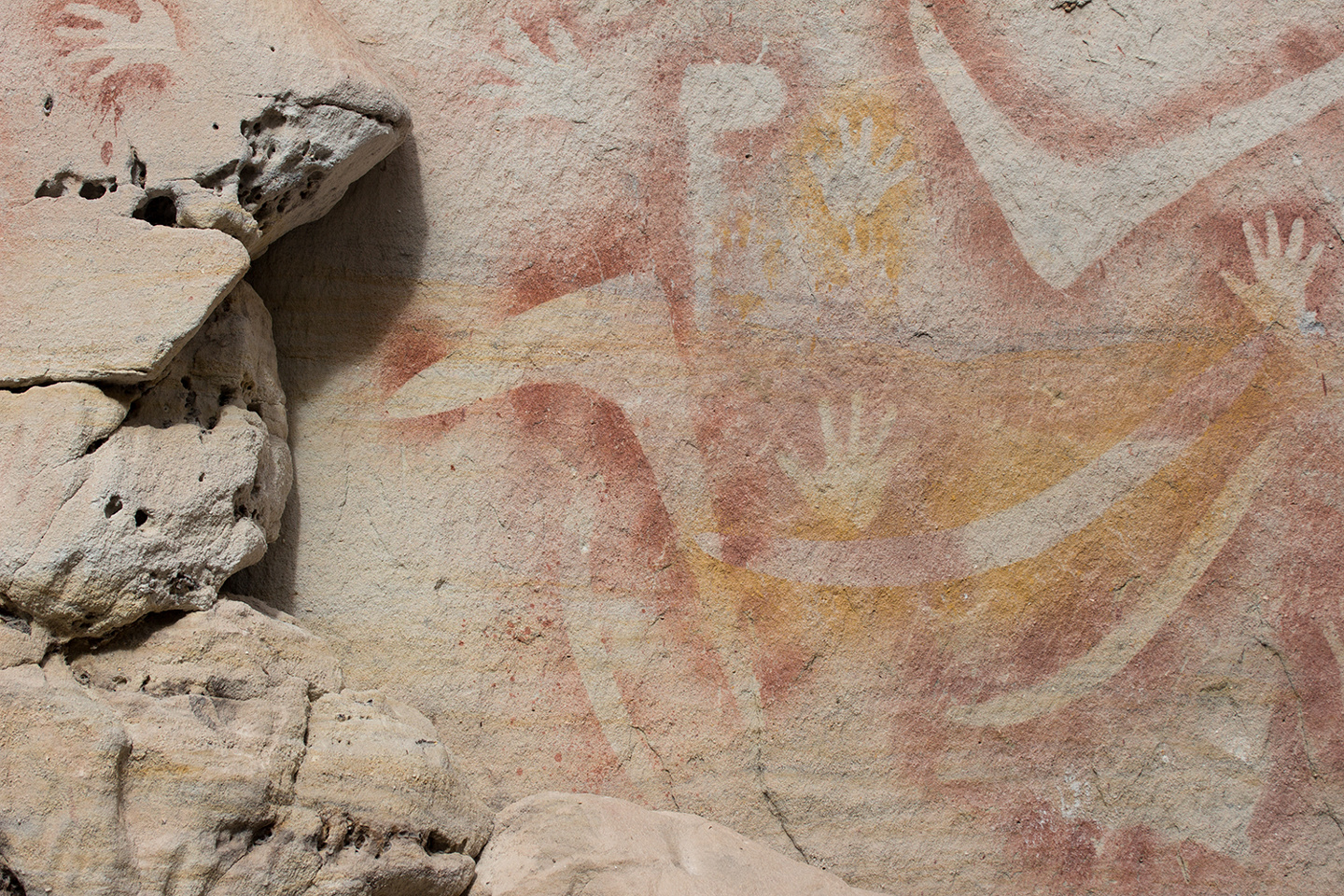Located in what is now Central Queensland, Australia, Carnarvon Gorge is one of the country’s most important historical and natural landmarks. For many centuries, the gorge has been a canvas on which Indigenous artists and communities have imprinted their histories, through stenciled images of weaponry and shields, domestic tools, ceremonial objects, and indexes of the human body. Brisbane-based artist Dale Harding—a descendant of the Bidjara, Ghungalu, and Garingbal peoples of Central Queensland, born in 1982—approaches the site as a map. By making copies of the represented objects, he traces their formal and material lineage, which is often embedded in the colonial narrative by their problematic inclusion in ethnographic collections and museums.
Harding’s work for documenta 14 departs from the notion of the copy as an un-original, an artifact without archaeology, yet through which the life and afterlives of the represented original can emerge. Carnarvon Gorge is present in the exhibition in Kassel as a one-to-one photographic replica. Rendered in a monochrome ultramarine blue and reproduced in multiple silkscreen wall prints, this image exists as a copy of the mural paintings as much as it constitutes the act of copying itself by means of stenciling. The blue palette chosen for the wall prints refers to a pigment known as Reckitt’s Blue, which was introduced to Indigenous art following contact with European missionaries.
The catalogue of shapes impressed onto the walls of Carnarvon Gorge are the source material for Harding’s presentation in Athens. He reproduces artifacts—relating to his own family history as much as to the forms found at the historical site—as an array of casts, from which his objects are molded in black and translucent silicone. These “new” artifacts—as copies and as fetish objects—lay bare a genealogy of form, while in the same instance offering a sharp comment on the gendered and racial stereotypes still associated with certain Indigenous historical objects.
Harding’s profound commitment to an archaeology of reproduction unravels the type of display that seeks to stabilize or fix the material that is the subject of his work. His objects are traced in history, yet liberated from it. They remain in flux, just as the artists working on Carnarvon Gorge inscribed the cave walls with story upon story, shape upon shape, the shadow of one becoming the form of another.
—Michelangelo Corsaro and Hendrik Folkerts


